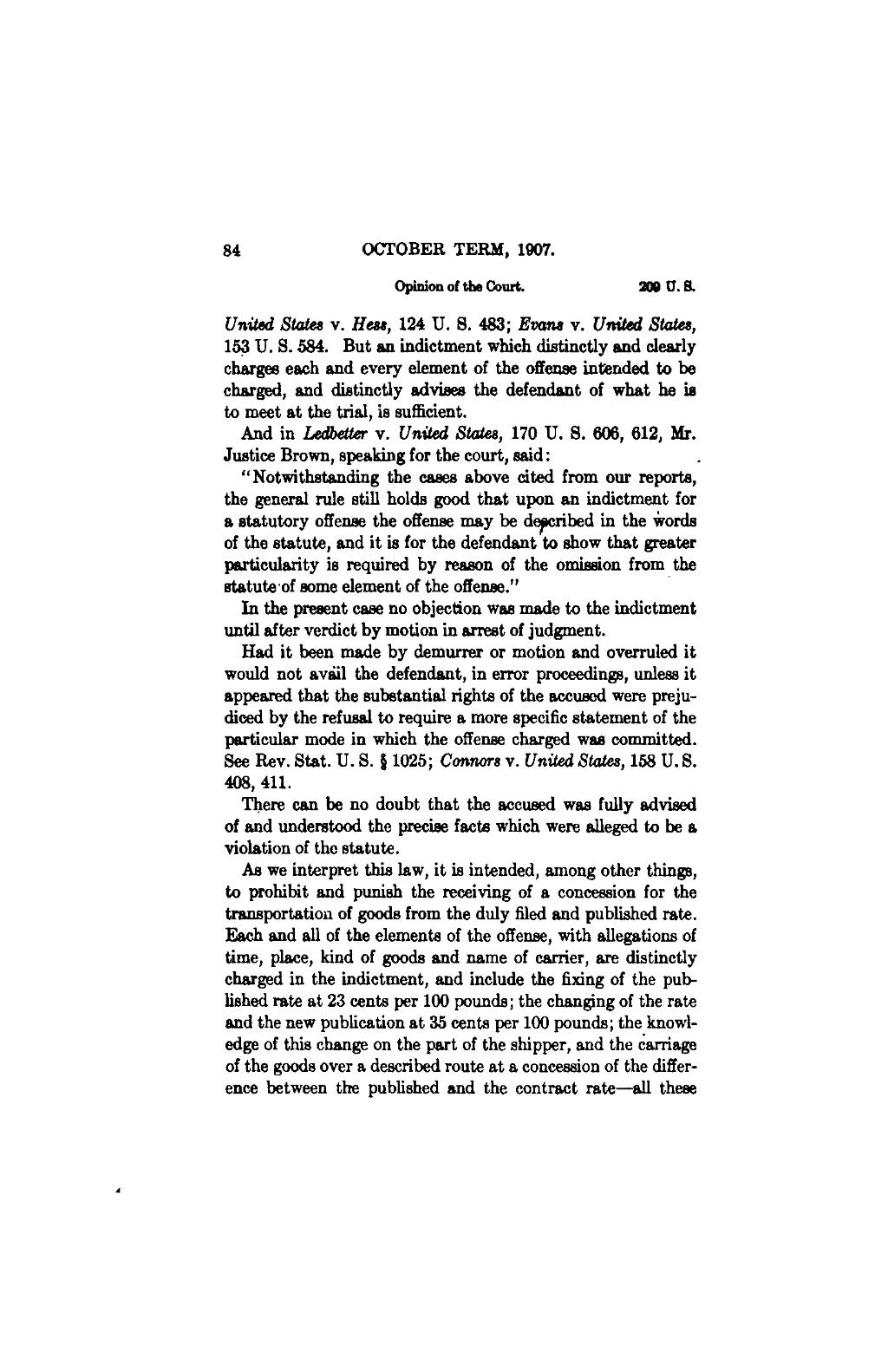84 OCTOBER TERM, 1907. Opim'on of the Court. ?9 0'. ?. United $tat? v. He?, 124 U.S. 483; Evaas v. United ?qta?, 153. U.S. 584. But an indictment which distinctly and clearly charges each and every element of the offense in?ended to be charged, and distinctly advises the defendant of what he is to meet at the tr/al, is sufficient. And in ? v. Un/ted $tat?, 170 U.S. 606, 612, Mr. Justice Brown, speaking for the court, said: "Notwithstanding the cases above cited from our reports, the general rule still holds good that upon an indictment for a statutory offense the offense may be de?eribed in the ?ords of the statute, and it is for the defendant to show that greater particularity is required by rcawn of the oral--ion from the statute'of some element of the offense." In the present case no objection was made to the indictment until after verdict by motion in arrest of judgment. Had it been made by demurrer or motion and overruled it would not av/il the defendant, in error proceedings, unless it appeared that the sub?tant/al rights of the accused were preju- diced by the refusal to require a more specific statement of the l?articular mode in which the offense charged was committed. See Rev. Stat. U.S. �25; Connors v. United $tate?, 158 U.S. 408, 411. There can he no doubt that the accused was fully advised of and understood the precise facts which were alleged to be a violation of the statute. As we interpret tMs law, it is intended, among other things, to prohibit and punish the receiving of a concession for the transportation of goods from the duly fried and published rate. Each and all of the elements of the offense, with allegations of t/me, place, kind of goods and name of carrier, are distinctly charged in the indictment, and include the fixing of the pub- ilsbed rate at 23 cents per 100 pounds; the changing of the rate and the new publication at 35 cents per 100 pounds; the knowi- edge of this change on the part of the shipper, and the ?arriage of the goods over a described route at a concee?ion of the differ- ence between the published and the contract rate--all these
�
